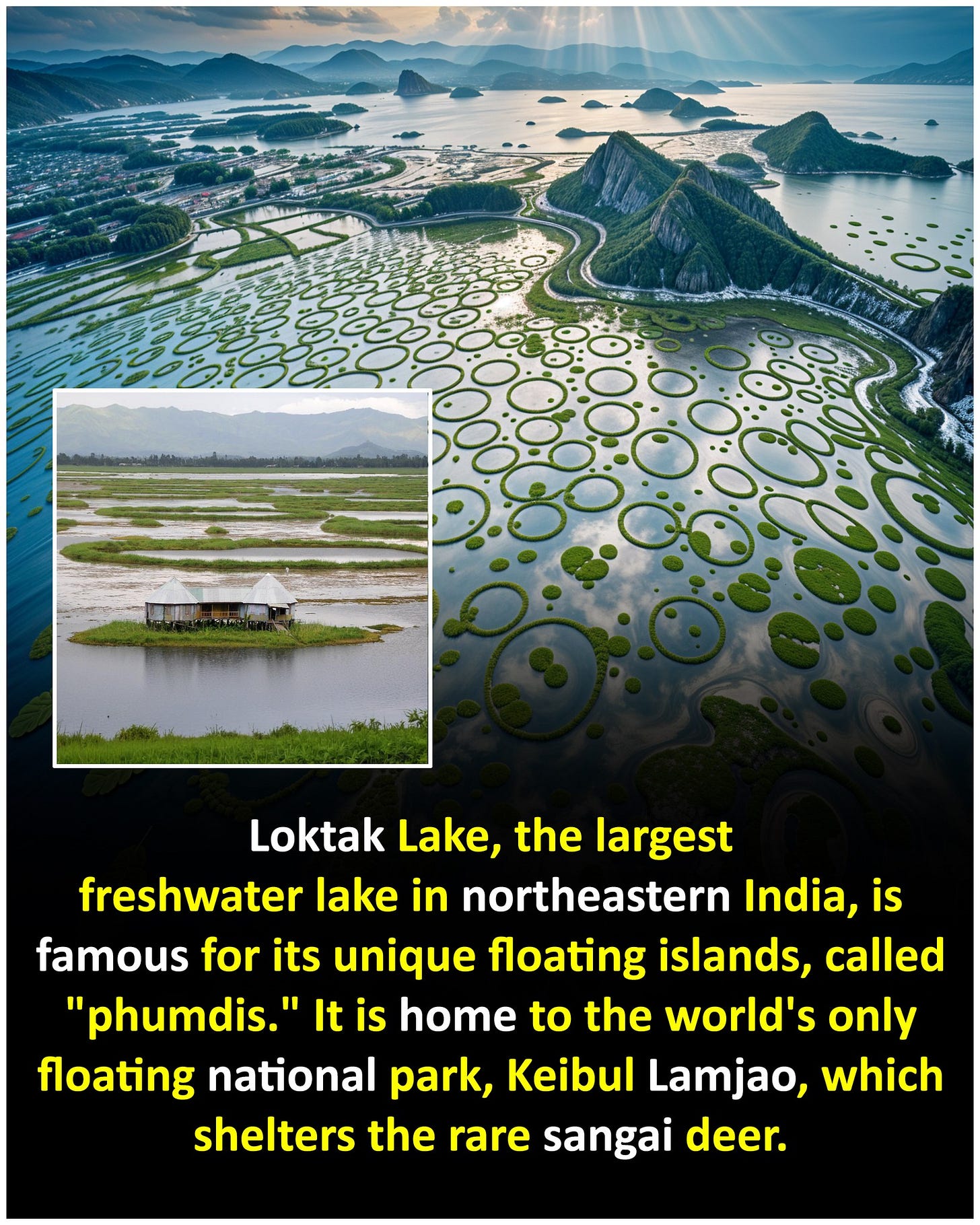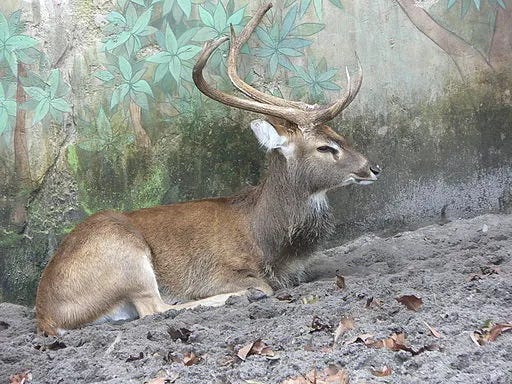Keibul Lamjao National Park-The World’s Only Floating National Park Loktak Lake is renowned for its distinctive circular floating formations known as phumdis or phumshangs. These formations consist of a thick layer of vegetation, soil, and organic matter, forming buoyant ecosystems that seem to float against gravity. This unique habitat, known locally as phumdi, is crucial for the survival of the Sangai deer sub- species, which is listed as endangered by the IUCN Red List and is protected under Schedule I of the Indian Wildlife Protection Act of 1972. (Below: a Sangai deer)
The creation of phumdis is largely attributed to the dynamic interaction of vegetation, soil, and organic matter moved by wind and water currents. They are vital to Loktak Lake's ecosystem and cultural legacy, offering a spectacular glimpse into the natural wonders of the lake.
Here are some key highlights about the phumdis of Loktak Lake:
Floating Islands:
Phumdis look like small islands, with some extending up to 40 km² (15 sq mi).
Unique Ecosystem:
They harbor a rich variety of plants and animals, including some rare and endangered species.
Natural Filters:
Phumdis serve as natural filters, removing excess nutrients and pollutants from the water, thus preserving the lake's ecological balance.
Habitat for Fishermen:
Local fishermen live on these floating masses, constructing traditional huts called phumsangs.
Keibul Lamjao National Park:
These floating formations are central to the Keibul Lamjao National Park, the only floating national park in the world, where the endangered brow-antlered Sangai deer resides.





What an incredible place.